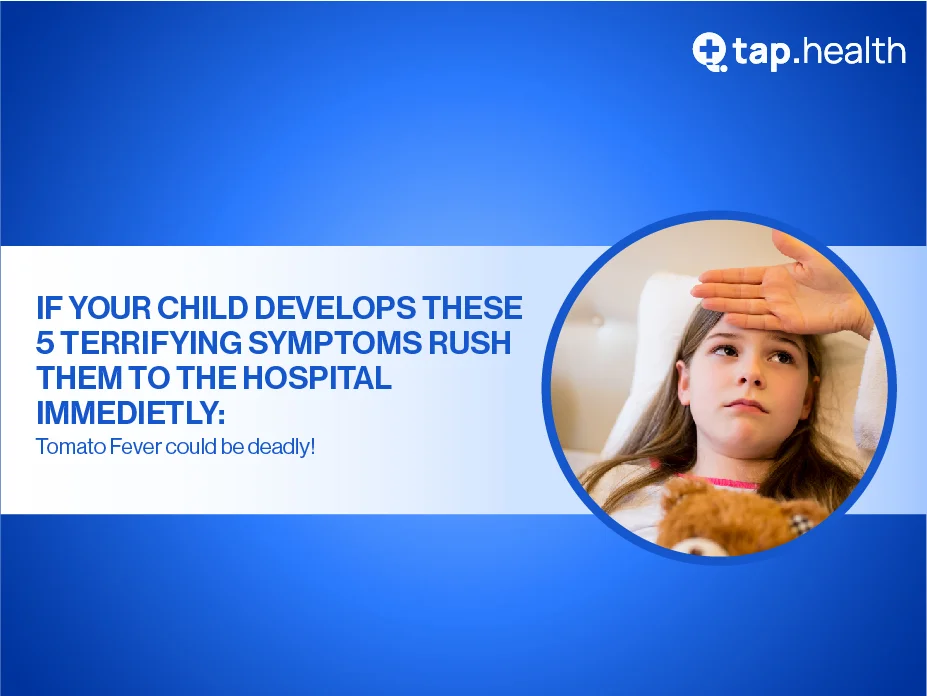Tomatoes are a kitchen staple, adding flavor and nutrition to countless dishes. However, for some individuals, consuming tomatoes can lead to uncomfortable flu-like symptoms, often referred to as “tomato flu.” These reactions may stem from allergies, intolerances, or sensitivities to compounds in tomatoes. Understanding when to seek medical advice for tomato-related symptoms is crucial for effective management and prevention. This blog explores the causes, symptoms, and strategies for handling tomato-induced reactions, helping you decide when professional help is necessary.
What Is Tomato Flu?
Tomato flu refers to flu-like symptoms triggered by consuming tomatoes or tomato-based products. Unlike viral infections, tomato flu is linked to the body’s reaction to specific compounds in tomatoes, such as histamines, salicylates, or proteins. These reactions can mimic flu symptoms, including headaches, nausea, fatigue, and skin rashes. While the exact mechanisms are still under study, tomato flu is distinct from common viral illnesses, requiring different management approaches.
For some, the preparation method—raw, cooked, or processed—impacts the severity of symptoms. Raw tomatoes may trigger stronger reactions in sensitive individuals due to unchanged chemical compositions, while cooking can alter these compounds, sometimes reducing symptoms.
Can Tomatoes Cause Flu-Like Symptoms?
Yes, tomatoes can cause flu-like symptoms in certain individuals due to allergies or intolerances. These reactions are not caused by viruses but by the body’s response to specific tomato components. Differentiating between tomato-induced symptoms and viral infections is essential, as treatment approaches differ significantly.
Tomato allergies involve an immune response to proteins, while intolerances stem from difficulty digesting components like fructose or fiber. Both can lead to discomfort, but their underlying causes and management strategies vary.
Understanding Tomato Allergy vs. Intolerance
Tomato Allergy
A tomato allergy occurs when the immune system mistakenly identifies tomato proteins as harmful, triggering an immune response. This can lead to symptoms like itching, hives, or, in severe cases, anaphylaxis—a life-threatening reaction requiring immediate medical attention. Allergies are more common in individuals with a history of food allergies, hay fever, or asthma.
Tomato Intolerance
Tomato intolerance, on the other hand, is a non-immunological response caused by difficulty digesting tomato components, such as sugars or fibers. Symptoms include bloating, gas, diarrhea, or abdominal pain. Unlike allergies, intolerances do not involve the immune system and are generally less severe.
When to Seek Medical Advice: If you experience severe symptoms like difficulty breathing, swelling, or persistent discomfort after consuming tomatoes, consult a doctor or allergist for proper diagnosis and management.
The Science Behind Tomato-Induced Reactions
When someone with a tomato allergy consumes tomatoes, their immune system releases immunoglobulin E (IgE) antibodies, which bind to tomato proteins. This triggers the release of histamine, causing inflammation and symptoms like skin rashes, itching, sneezing, or digestive issues. In severe cases, this can lead to anaphylaxis, requiring urgent care.
For those with intolerances, symptoms arise from the body’s inability to process compounds like fructose or fiber, leading to gastrointestinal discomfort. The severity of reactions varies, with some experiencing mild symptoms and others facing significant discomfort.
When to Seek Medical Advice: Persistent or worsening symptoms, especially those affecting breathing or blood pressure, require immediate medical attention.
Common Symptoms of Tomato-Induced Reactions
Tomato-induced reactions can manifest in various ways, often appearing shortly after consumption and lasting hours or days. Common symptoms include:
- Gastrointestinal Issues: Stomach cramps, bloating, diarrhea, or nausea.
- Skin Reactions: Hives, eczema, or itching.
- Respiratory Symptoms: Nasal congestion, wheezing, or difficulty breathing.
- Flu-Like Symptoms: Headaches, fatigue, or fever-like sensations.
In rare cases, tomato allergies can trigger anaphylaxis, characterized by difficulty breathing, a drop in blood pressure, or loss of consciousness. Another condition, oral allergy syndrome (OAS), may cause mild itching or tingling in the mouth and throat due to proteins in tomatoes resembling pollen allergens.
When to Seek Medical Advice: Seek immediate help for signs of anaphylaxis or persistent symptoms that disrupt daily life. Consult an allergist for OAS or recurring mild symptoms.
How to Manage Tomato Allergies and Intolerances
Managing tomato-related reactions involves dietary adjustments and vigilance. Here are key strategies:
- Avoid Tomatoes and Derivatives: Eliminate fresh tomatoes and processed products like sauces, soups, and condiments. Check food labels for hidden tomato ingredients.
- Track Symptoms: Keep a food diary to identify specific triggers, especially for intolerances. Note whether raw or cooked tomatoes cause stronger reactions.
- Consult an Allergist: For allergies, an allergist can confirm the diagnosis through tests and prescribe an epinephrine auto-injector for emergencies.
- Communicate Dietary Needs: Inform restaurants and food establishments about your restrictions to avoid accidental exposure.
When to Seek Medical Advice: If symptoms persist despite dietary changes or if you suspect an allergy, consult a healthcare provider for testing and personalized advice.
When Should You See a Doctor?
Knowing when to seek medical advice is critical for managing tomato-induced symptoms effectively. Here are scenarios that warrant professional attention:
- Severe Allergic Reactions: Symptoms like difficulty breathing, swelling, or a drop in blood pressure indicate anaphylaxis, requiring immediate emergency care.
- Persistent Symptoms: Ongoing discomfort, such as chronic digestive issues or skin reactions, should prompt a visit to a doctor or allergist.
- Suspected Oral Allergy Syndrome: If you experience mouth or throat itching after eating tomatoes, an allergist can diagnose OAS and recommend management strategies.
- Uncertain Diagnosis: If you’re unsure whether symptoms are due to allergy, intolerance, or another condition, medical testing can clarify the cause.
Preventive Measures for Tomato Sensitivity
Preventing tomato-induced reactions involves proactive steps:
- Read Labels Carefully: Check ingredient lists for tomato-based additives in processed foods.
- Test Small Amounts: If you suspect sensitivity but aren’t sure, try small amounts of tomato products under medical supervision.
- Explore Alternatives: Use substitutes like red bell peppers or tamarind for similar flavors in cooking.
- Carry Medication: If diagnosed with a tomato allergy, keep an epinephrine auto-injector on hand for emergencies.
When to Seek Medical Advice: If preventive measures fail or symptoms worsen, consult a healthcare provider for tailored solutions.
Conclusion
Tomato flu, allergies, and intolerances can cause significant discomfort, ranging from mild digestive issues to severe allergic reactions. Recognizing symptoms, understanding their causes, and knowing when to seek medical advice are essential for managing these conditions. By avoiding triggers, tracking symptoms, and consulting professionals when needed, individuals can minimize the impact of tomato-induced reactions on their lives. If you experience persistent or severe symptoms, don’t hesitate to seek medical guidance to ensure proper diagnosis and treatment.



